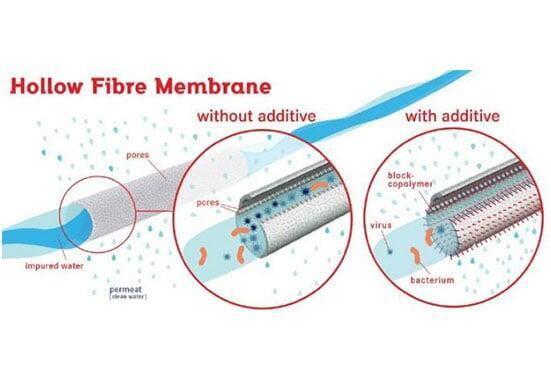Choosing the right filter for your home requires understanding the source and quality of your water, as well as the application for which it is needed (e.g. drinking water only or whole home water supply).
Depending on the source and quality of your water, you may want to consider different filtration processes such as reverse osmosis, ultrafiltration, ultraviolet, sediment filter, or a combination of these. Once you have narrowed down your choices, you should focus on the technical specifications of the filter.
Source of Water
Source of Water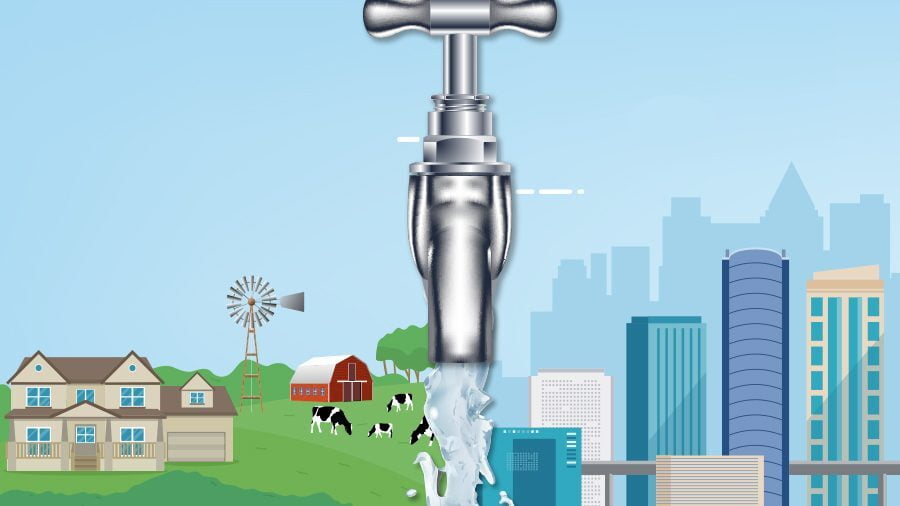
For domestic water supplies, it is typical to have two types of water supply: municipal and well water.
Municipal Water
Municipal water has already been treated with chlorine, so while you may still want to remove this chlorine, you will not have to deal with as much bacteria or parasites.
Well Water
Well water, however, may still contain bacteria or parasites. Therefore, it is important to assess the source and quality of your water before selecting a filter.
Categories of water filtration system for demotic use
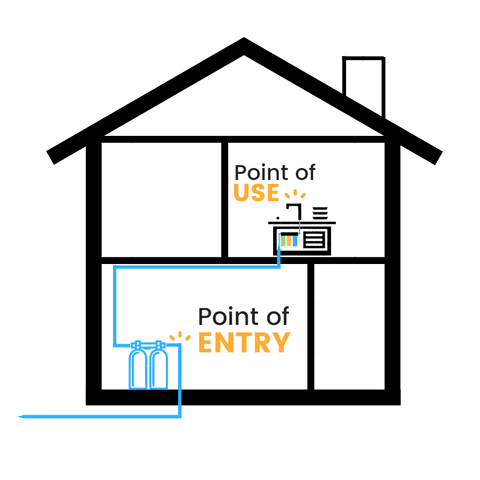
For domestic use, water filtration systems can be divided into two categories:
Point-of-Use (POU) and Point-of-Entry (POE).
Point-of-Use (POU)
POU systems filter the water at the point of use, such as an individual tap, faucet, or shower. These systems include those that connect to a water line underneath the sink, those that attach to a faucet, and even filtration pitchers that must be filled with water.
Point-of-Entry (POE)
POE systems, also referred to as “whole home” systems, filter all of the water that enters the home or business before it reaches any fixtures. These systems attach to the main line of the home and filter all of the water before it is distributed.
Types of water filters vary according to the treatment method they use
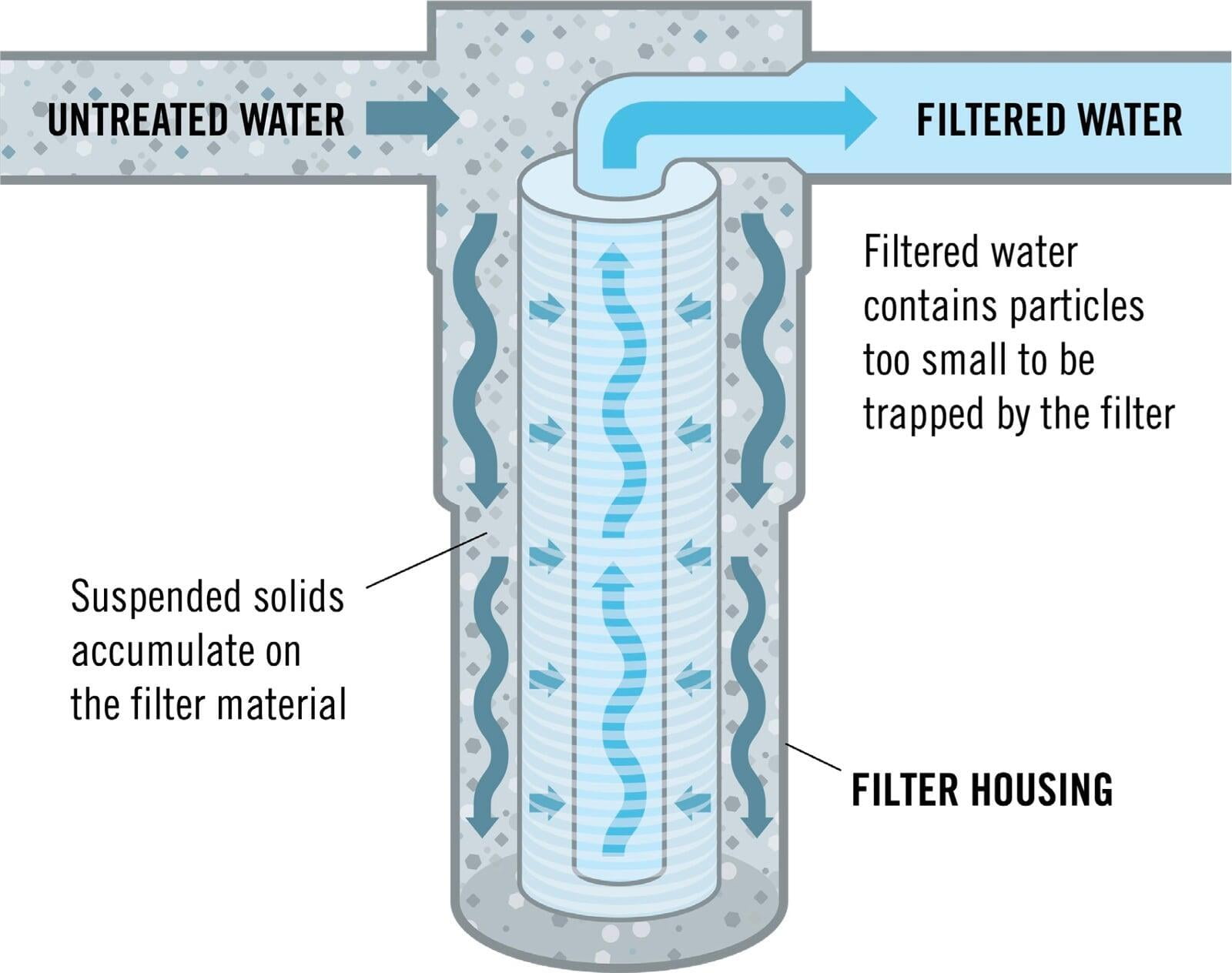
1- Sediment Filter
Sediment filters are designed to remove suspended solids, which are also known as sediment, turbidity, or particulate. A sediment filter essentially functions like a net that catches unwanted dirt particles as your water flows through the system. A sediment filter is attached at the point where water comes into your home. The filter has a bed of natural media (sand, anthracite, etc.). As the water passes through this bed, unwanted dirt particles become trapped. The water moves into the filter and leaves the sediment behind, then out of the filter so you get water coming into your home that is free from particulate. Sediment filters are very common in many homes, but they have a limited function. Only sediment that will become trapped in the bed of natural media is removed. Trace pathogen elements, heavy metals, and volatile organic compounds can still remain in your water.
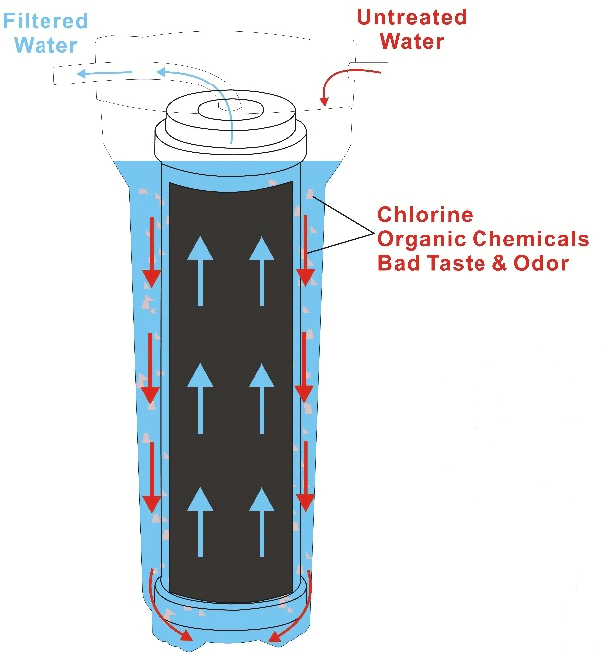
2- Carbon Filter
Carbon filters remove sediment but they also remove chlorine, volatile organic compounds (VOCs), odors and unpleasant tastes from water. Carbon filters contain activated carbon, which is made through a special manufacturing process that creates more bonding sites. As water passes through a carbon filter, impurities like VOCs and heavy metals become chemically bonded to the carbon. As the water works its way through the filter, a lot of unwanted impurities will become stuck to the carbon bonding sites and the water will leave the filter much purer than it came in. Carbon filters are effective at removing the impurities that bond to carbon. Not all impurities do. Sodium, for example, can pass directly through carbon filters without being removed.
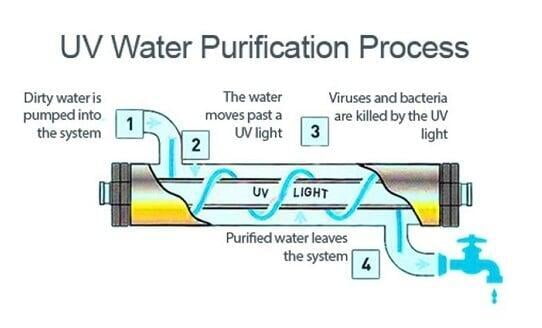
3- Ultraviolet purification
Ultraviolet purification systems neutralize bacteria, parasites, and microorganisms via germicidal ultraviolet wave lengths. UV Light damages the DNA of these living organisms, rendering them unable to reproduce. This is a highly effective filtration method for microbiologically unsafe water available. However, cloudiness in the water diminishes the efficacy of UV. Water turbidity is difficult for the UV radiation to penetrate, and bacteria can hide from the wavelengths behind particulate matter. In order to make sure your UV system is functioning at maximum performance, a sediment pre-filter of 5 microns is necessary.
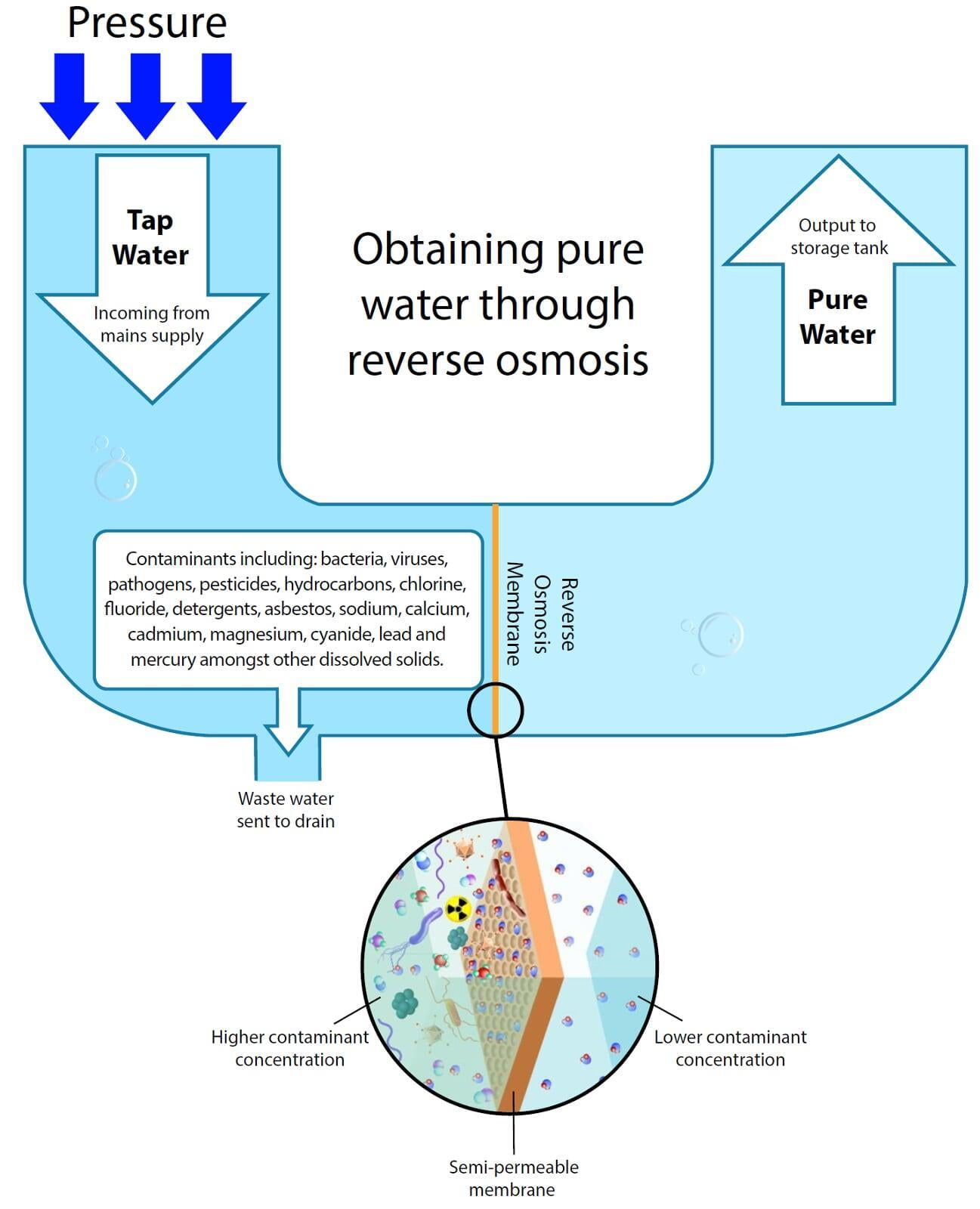
5- Reverse Osmosis
Reverse Osmosis (RO) is a popular filter method which uses pressure to push the unfiltered water, or brine, through a semi-permeable membrane. This membrane blocks the contaminants, allowing the clean water or permeate to flow through to the less concentrated side. RO systems are used in homes and industries where high-quality water with low total dissolved solids (TDS) is required.
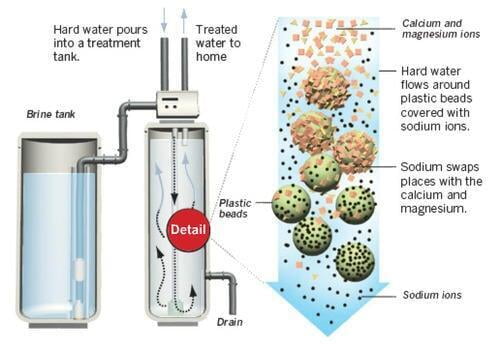
6- Water Softeners
Water softeners are used to remove minerals like calcium and magnesium that create hard water before it enters your water heater or home. This prevents scale from forming and clogging plumbing pipes, water heaters, and other appliances. It also prevents scum from accumulating on plumbing and fixtures, resulting in better skin and hair health, as well as brighter laundry.
Technical Characteristics of Water Filtration Systems
Technical Characteristics of Water Filtration Systems
The filtration process can be divided into two disinfection methods.
The first is physical filtration, which utilizes a micron filter to remove harmful particles from water.
The second is chemical filtration, which uses media and carbon filters to remove hazardous chemicals from water.
1- Physical Filtration
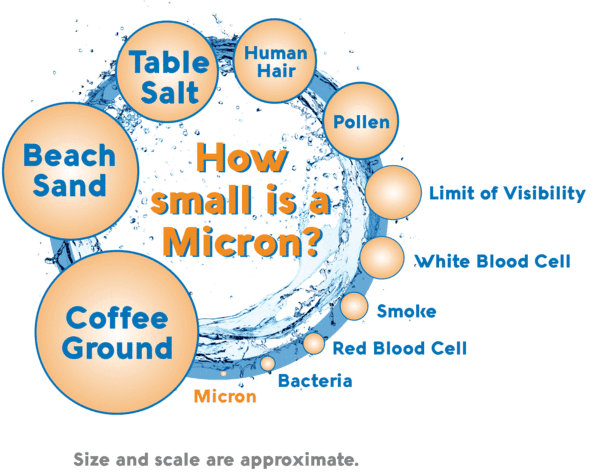
What Is a Micron ?
When selecting a water filter, you may come across micron ratings in the product description. A micron, which is symbolized by the Greek letter μ, is also known as a Millimicron and is equivalent to 1/1,000,000 of a meter. This is equal to 0.000039 of an inch. Cartridge filters have micron ratings that determine the smallest particle size that can be removed. Typically, these ratings range from 50 microns for all filter cartridge types to 0.001 microns for pleated membrane cartridges.
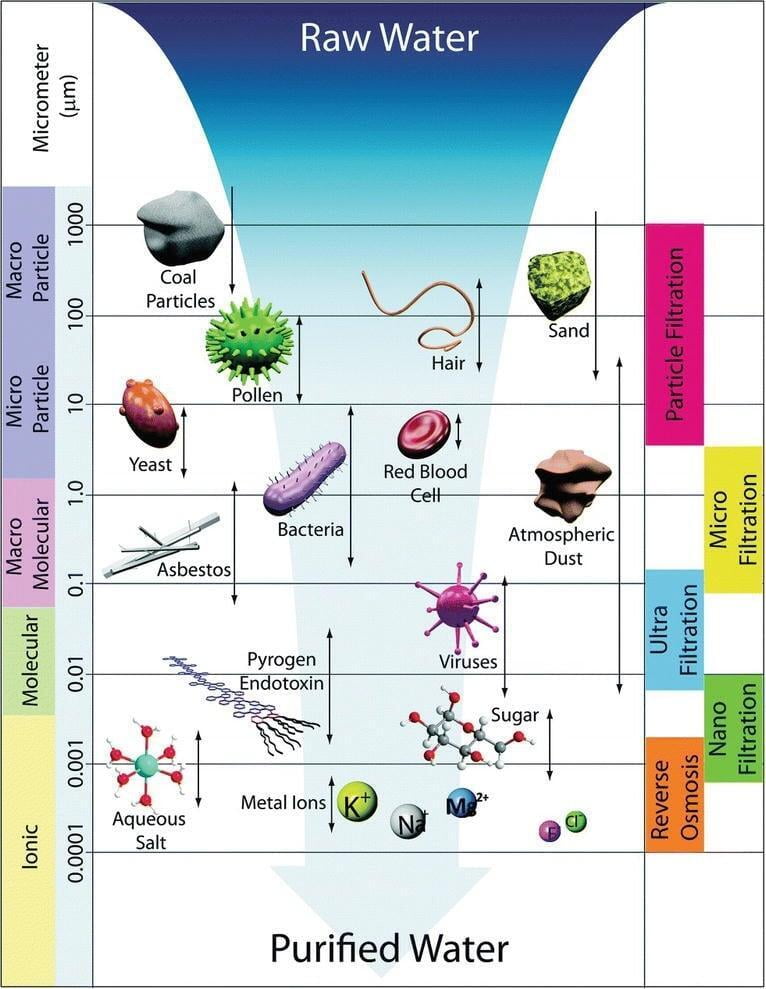
How many microns should your filter be?
The micron filter to choose depends on the source of the water and the region's environment. For instance, if the dirt particles in a city are very fine, a 1-micron filter or smaller is required to prevent the passage of all fine particulate. On the other hand, if you are using well water, it is likely to contain bacteria, so you need special treatment and microfiltration with a filter less than 1-micron to prevent the bacteria from getting into the filtered water. Viruses and sugar require ultra and nano filtration with a micron filter from 0.01 to 0.001 micron, while heavy metals and salt need an RO system with filtration from 1 Nano micron to 0.01 Nano micron
Nominal vs absolute micron filters
The micron size ratings of a filter cartridge can be either "Nominal" or "Absolute." Nominal ratings indicate that the filter will remove 95% of particles at that micron size, while absolute ratings indicate that the filter will remove 99%.
Pressure Drop & Replacement the Filter Cartridge
To determine the efficiency and condition of the cartridge, one should monitor the pressure drop across the cartridge filter. When there is a large decrease in pressure, the cartridge should be replaced. The pressure drop value for cartridge replacement varies depending on the size of the micron; small micron cartridges (such as membrane cartridges) have a lower replacement pressure drop value than larger micron cartridges (like sediment cartridges).
2- Chemical Filtration

- Multi Layer Filtration
The multi-layer filter is a system whereby water is filtered through various layers of soil, sand, gravel, or other rocks as it percolates into the ground. This process results in the gradual purification of the water into clean groundwater.
- Carbon Filtration
As describe above

